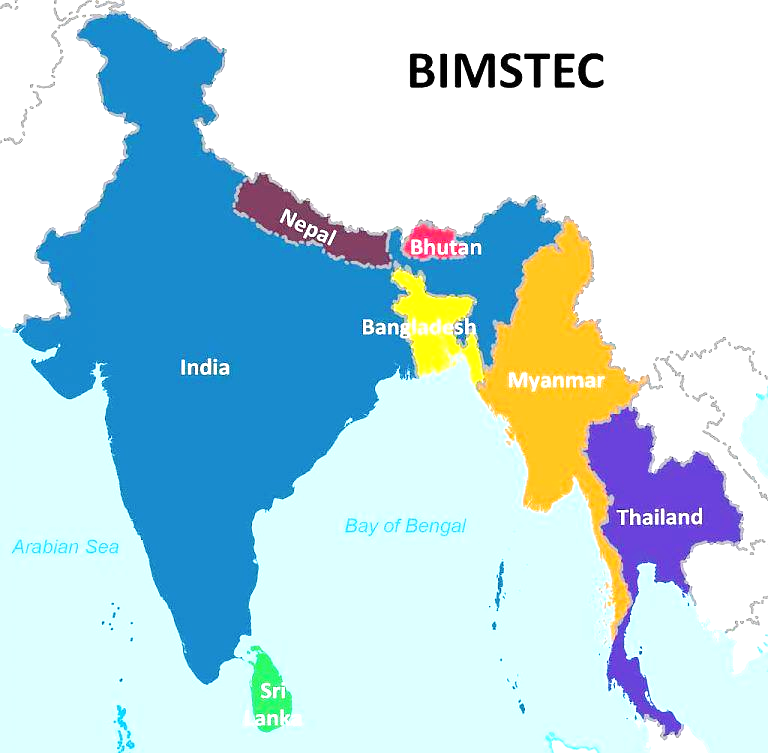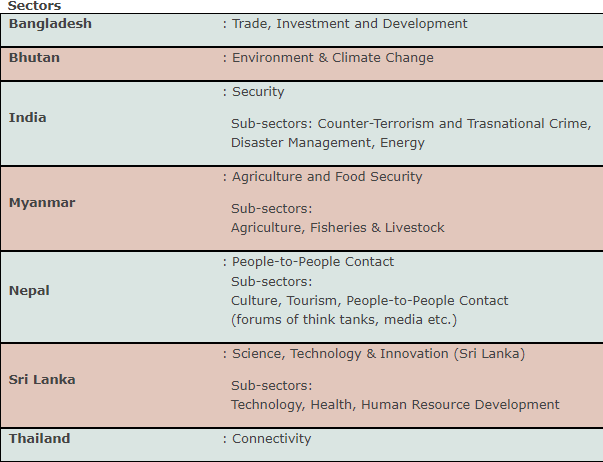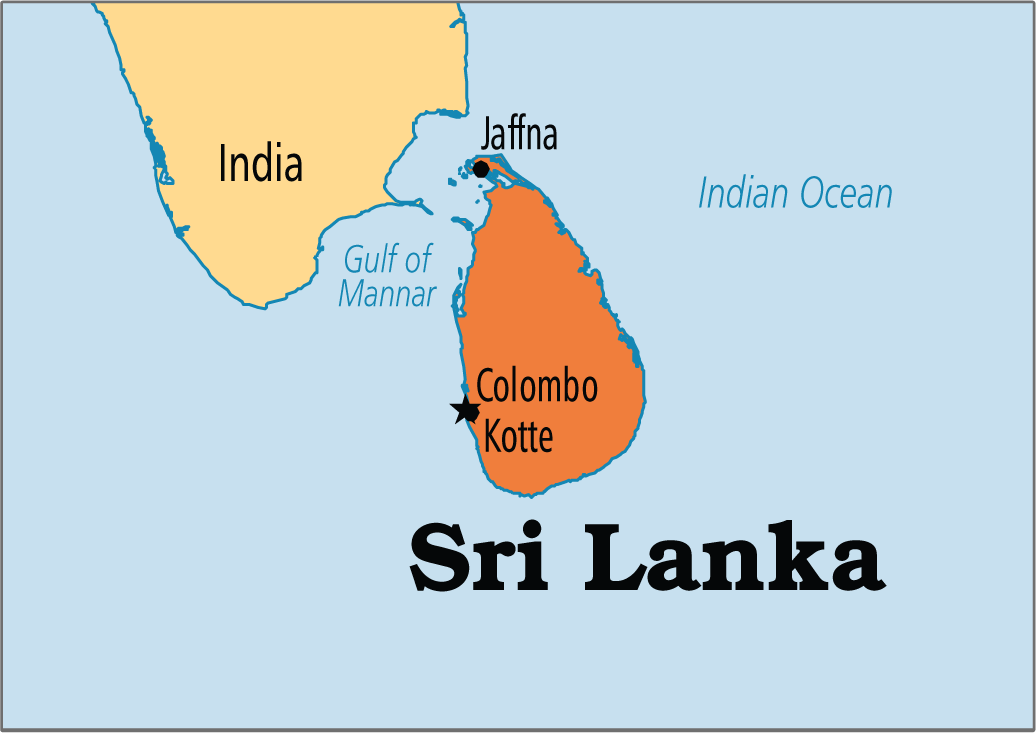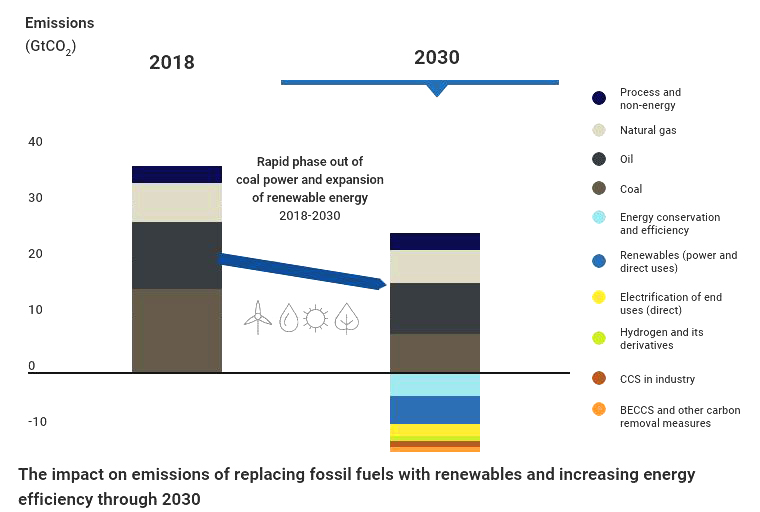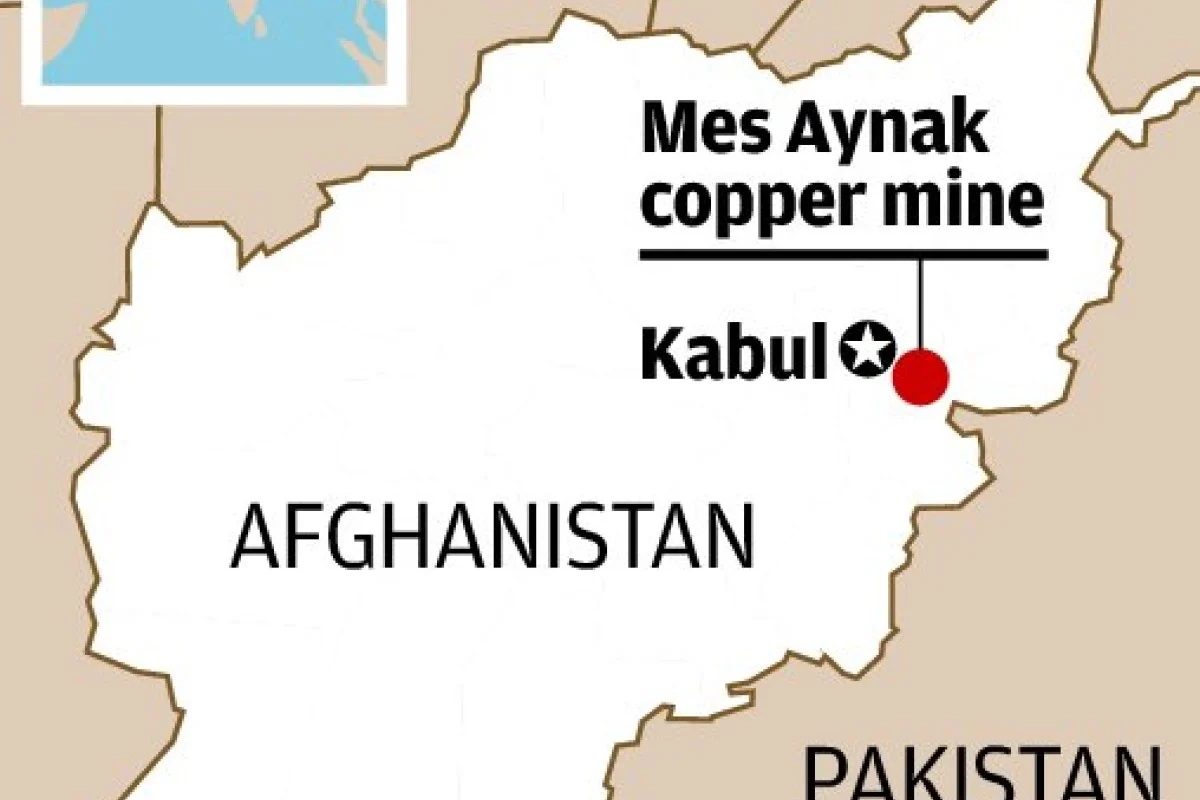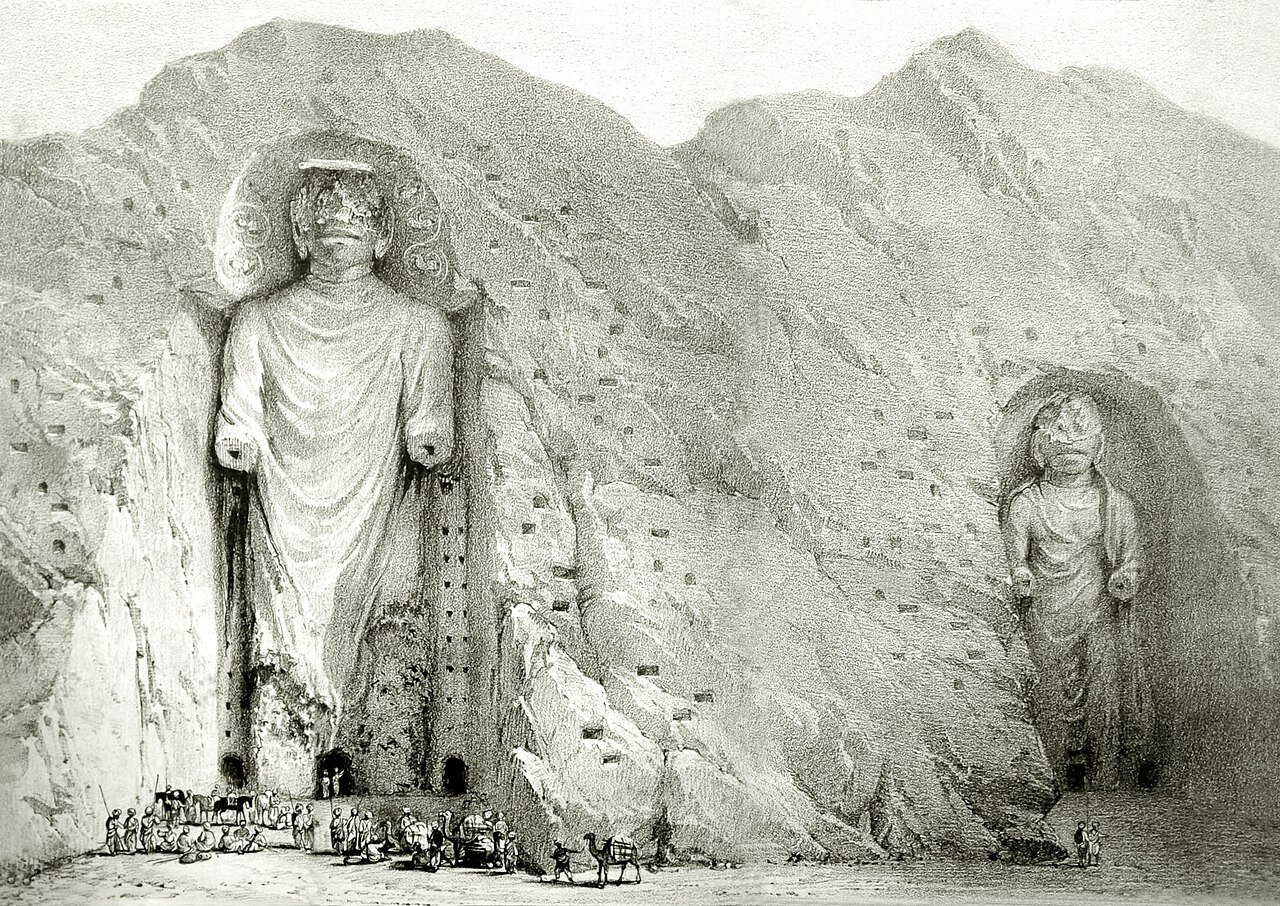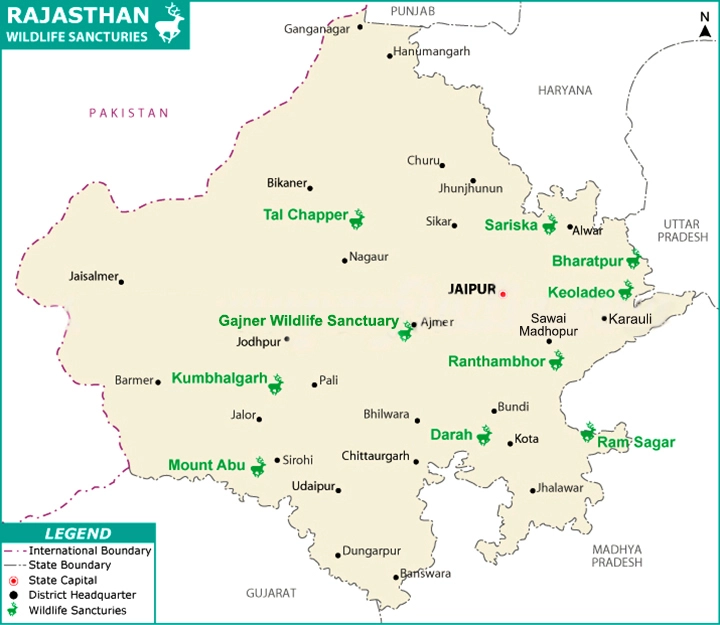International Relations
Fifth BIMSTEC Summit
For Prelims: Fifth BIMSTEC Summit, BIMSTEC, SAARC, BIMSTEC Charter, Indian Ocean Rim Association (IORA).
For Mains: Neighbourhood first policy. Gujral Doctrine, Groupings & Agreements Involving India and/or Affecting India's Interests, Global Groupings
Why in News?
Recently, the Bay of Bengal Initiative for Multi-Sectoral Technical and Economic Cooperation (BIMSTEC) grouping’s fifth summit took place in Colombo, Sri Lanka (Host for the Fifth Summit).
What are the Key Highlights of the Summit?
- BIMSTEC Charter: The signing of the BIMSTEC Charter was the main outcome of this summit.
- Under this Charter, the members were expected to meet once every two years.
- With the Charter, the BIMSTEC now has an international personality. It has an emblem, it has a flag.
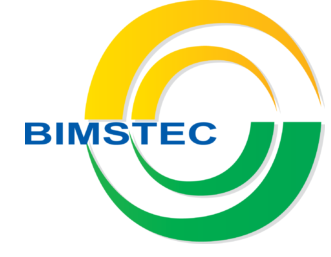
- It has a formally listed purpose and principles that it is going to adhere to.
- In line with the development of the organisation into a formal structure, the leaders of the member-countries have agreed to divide the working of the grouping into seven segments, with India providing leadership to the security pillar.
Pillars of BIMSTEC
- Master Plan for Transport Connectivity: The summit saw the declaration of the Master Plan for Transport Connectivity that would provide a framework for regional and domestic connectivity.
- Other Agreements: Member countries also signed a treaty on mutual legal assistance on criminal matters.
- A Memorandum of Association (MoA) on the establishment of BIMSTEC Technology Transfer Facility (TTF) in Colombo, Sri Lanka.
- India will provide the (BIMSTEC) secretariat USD 1 million US dollars to increase its operational budget.
What is BIMSTEC?
- The Bay of Bengal Initiative for Multi-Sectoral Technical and Economic Cooperation (BIMSTEC) is a regional organisation comprising seven Member States: five deriving from South Asia, including Bangladesh, Bhutan, India, Nepal, Sri Lanka and two from Southeast Asia, including Myanmar and Thailand.
- This sub-regional organisation came into being on 6 June 1997 through the Bangkok Declaration.
- With 21.7% of the world’s population and a combined Gross Domestic Product (GDP) of USD 3.8 trillion, BIMSTEC has emerged as an influential engine of economic growth.
- The BIMSTEC Secretariat is in Dhaka.
- Institutional Mechanisms:
- BIMSTEC Summit
- Ministerial Meeting
- Senior Officials’ Meeting
- BIMSTEC Working Group
- Business Forum & Economic Forum
Is BIMSTEC an Alternate of SAARC?
- The PM of India had invited South Asian Association for Regional Cooperation (SAARC) countries for his swearing in ceremony in 2014, including Pakistan on the lines of his Neighbourhood first policy.
- The Prime Minister had also participated in the 18th SAARC summit at Kathmandu in November 2014.
- However, post Uri attack (on an Indian military base) in October 2016, India gave a renewed push for the BIMSTEC that had existed for almost two decades but been largely ignored.
- Alongside the BRICS summit in Goa, PM hosted an outreach summit with BIMSTEC leaders.
- BIMSTEC countries had supported India’s call for a boycott of the SAARC summit scheduled in Islamabad in November 2016.
- As a result, the SAARC summit was postponed for an indefinite period.
- Thus, with work on several key initiatives under SAARC stymied because of the breakdown of the relationship with Pakistan, India began focusing on other regional groupings such as BIMSTEC and Indian Ocean Rim Association (IORA).
Way Forward
- BIMSTEC Free Trade Agreement: There is a need for finalisation of the BIMSTEC Free Trade Agreement among the member countries.
- As the region is facing challenges of health and economic security and stressed the need for solidarity and cooperation, the FTA will make the Bay of Bengal a bridge of connectivity, a bridge of prosperity, a bridge of security.
- Apart from this, there is a necessity for coastal shipping ecosystem and electricity grid interconnectivity, as two of the necessary components of the evolving shape of BIMSTEC.
- Gujral Doctrine: India would have to counter the impression that BIMSTEC is an India-dominated bloc, in that context India can follow the Gujral doctrine that intends to chalk out the effect of transactional motive in bilateral relations.
- The Gujral Doctrine is a set of five principles to guide the conduct of foreign relations with India’s immediate neighbours.These principles are:
- With neighbours like Bangladesh, Bhutan, Maldives, Nepal and Sri Lanka, India does not ask for reciprocity but gives and accommodates what it can in good faith and trust.
- No South Asian country should allow its territory to be used against the interest of another country of the region.
- No country should interfere in the internal affairs of another.
- All South Asian countries must respect each other’s territorial integrity and sovereignty.
- They should settle all their disputes through peaceful bilateral negotiations.
- The Gujral Doctrine is a set of five principles to guide the conduct of foreign relations with India’s immediate neighbours.These principles are:
International Relations
EAM Visit to Sri Lanka
For Prelims: India-Sri Lanka Relations, Asia Development Bank, Palk Bay.
For Mains: India-Sri Lanka Relations, Neighborhood First policy, Sri Lanka’s long-pending Tamil question.
Why in News?
Recently, India’s External Affairs Minister visited Sri Lanka. The visit finalized an MoU that provided India to set up hybrid power projects in three Islands (Nainativu , Delft or Neduntheevu , and Analaitivu) off Jaffna.
- In this Project, India will effectively replace the Chinese venture.
- It is the third Indian energy project coming up in Sri Lanka’s north and east.
- Earlier, India extended a USD1-billion short-term concessional loan to Sri Lanka to help the island nation cope with one of the worst economic crisis in decades.
What are the Highlights of the Visit?
- Fending Off Chinese Threat: In January 2021, Sri Lanka’s Cabinet decided to award renewable energy projects in Nainativu , Delft or Neduntheevu , and Analaitivu islands to Chinese company Sinosoar-Etechwin, following an Asia Development Bank-backed competitive bid.
- India was quick to express concern to the Sri Lankan side over the Chinese project coming up in the Palk Bay, barely 50 km off Tamil Nadu.
- Thus, India offered to execute the same project with a grant rather than a loan.
- MRCC: Further, India and Sri Lanka have also agreed to set up a Maritime Rescue Coordination Center (MRCC), signaling greater defence sector collaboration between the neighbours.
- MRCCs are part of an international network under the UN’s International Maritime Organisation to monitor the sea lanes with the objective of swift response to emergencies, such as vessels in distress, rescue and evacuation of people, and prevention of and containing environmental disasters such as oil spills.
- The agreement appears to be part of India’s SAGAR (Security and Growth for all in the Region) initiative in the Indian Ocean, which has also seen India, Sri Lanka and Maldives give a new push to their 2011 Colombo Security Conclave that now includes Mauritius.
- Fisheries Harbours: India will also help develop fisheries harbours in Point Pedro, Pesalai, and Gurunagar in the Northern Province, and Balapitiya, south of capital Colombo.
- Capacity Building: India also assured supporting education, extending a grant for Sri Lanka’s Unique Digital Identity project, and collaborating in diplomatic training.
- Resolution of Tamil Question: On developments in regard to Sri Lanka’s long-pending Tamil question, India has welcomed the recent talks between President Gotabaya Rajapaksa and the Tamil National Alliance (TNA) representing war-affected Tamils of the north and east.
What are Recent Issues in India-Sri Lanka Relations?
- Killing of Fishermen: Killing of Indian fishermen by the Sri Lankan Navy is a lingering issue between these two nations.
- In 2019 and 2020, a total of 284 Indian fishermen were arrested and a total of 53 Indian boats were confiscated by the Sri Lankan authorities.
- Influence of China: China’s rapidly growing economic footprint (and political clout as a corollary) in Sri Lanka is straining India-Sri Lanka relations.
- China is already the largest investor in Sri Lanka, accounting for 23.6% of the total Foreign Direct Investment (FDI) during 2010-2019 as against 10.4% from India.
- China is also one of the largest export destinations for Sri Lankan goods and holds over 10% of its external debt.
- 13th Amendment of the Sri Lankan Constitution:
- It envisages devolution of necessary powers to the provincial councils to address the just demand of the Tamil people for equality, justice, peace, and respect within a united Sri Lanka. India supports its implementation.
Way Forward
- A subterranean trust deficit exists between India and Sri Lanka yet neither Sri Lanka nor India can afford to have strained ties.
- However, as a much larger country, the onus is on India to carry Sri Lanka along. India needs to be extremely patient and avoid reacting to any pinpricks and engage Sri Lanka even more regularly and closely, especially at the highest levels.
- There is a need to step up our people-centric developmental activities while scrupulously staying clear of any interference in Colombo’s domestic affairs.
- Nurturing the Neighbourhood First policy with Sri Lanka is important for India to preserve its strategic interests in the Indian Ocean region.
UPSC Civil Services Examination, Previous Year Questions (PYQs)
Q. Consider the following statements: (2020)
- The value of Indo-Sri Lanka trade has consistently increased in the last decade.
- “Textile and textile articles” constitute an important item of trade between India and Bangladesh.
- In the last five years, Nepal has been the largest trading partner of India in South Asia.
Which of the statements given above is/are correct?
(a) 1 and 2 only
(b) 2 only
(c) 3 only
(d) 1, 2 and 3
Ans: (b)
EXP:
- As per data from the Department of Commerce, Indo- Sri Lanka bilateral trade value for a decade (2007 to 2016) was 3.0, 3.4, 2.1, 3.8, 5.2, 4.5, 5.3, 7.0, 6.3, 4.8 (in billion USD). It reflects continuous fluctuation in the trend of trade value. There has been an overall increase but the same cannot be said as consistent rise in trade value. Hence statement 1 is not correct.
- Bangladesh has been a major textile trading partner for India, with a share of more than 5% in exports and over 7% in imports. While annual textile exports to Bangladesh averages $2,000 million, imports are worth $400 (Year: 2016-17). Hence, statement 2 is correct.
- According to the data, in 2016-17, Bangladesh is India’s largest trading partner in South Asia, followed by Nepal, Sri Lanka, Pakistan, Bhutan, Afghanistan and Maldives. The level of Indian exports also follows the same order. Hence, statement 3 is not correct.
- Therefore, option (b) is the correct answer.
Economy
World Energy Transitions Outlook 2022
For Prelims: World Energy Transitions Outlook 2022, IRENA, decarbonisation, Paris Agreement, Intergovernmental Panel on Climate Change, renewables, hydrogen, climate change
For Mains: Findings of the World Energy Transitions Outlook 2022 and issues
Why in News?
Recently, the International Renewable Energy Agency (IRENA) launched the World Energy Transitions Outlook 2022 at the Berlin Energy Transition Dialogue.
- The Berlin Energy Transition Dialogue (BETD) has become a leading international forum for key stakeholders of the energy sector.
What is Energy Transition?
- Energy transition refers to the global energy sector’s shift from fossil-based systems of energy production and consumption — including oil, natural gas and coal — to renewable energy sources like wind and solar, as well as lithium-ion batteries.
What is the Purpose of the Outlook?
- The Outlook sets out priority areas and actions based on available technologies that must be realised by 2030 to achieve net zero emissions by mid-century.
- It also takes stock of progress across all energy uses to date, which shows that the current pace and scale of the renewables-based transition is inadequate.
- It provides in-depth analysis of two areas particularly relevant for the decarbonisation of end-use sectors: electrification and bioenergy.
- It also explores the socio-economic impacts of the 1.5°C pathway (under Paris Agreement) and suggests ways to speed progress towards universal access to clean energy (renewable energy).
What are the Findings of the Outlook?
- Global annual additions of renewable power will triple by 2030 as recommended by the Intergovernmental Panel on Climate Change.
- At the same time, coal power will have to resolutely be replaced, fossil fuel assets phased out and infrastructure upgraded.
- The Outlook sees electrification and efficiency as key drivers of the energy transition, enabled by renewables, hydrogen, and sustainable biomass.
- End-use decarbonisation will take centre-stage with many solutions available through electrification, green hydrogen, and the direct use of renewables.
- High fossil fuel prices, energy security concerns and the urgency of climate change underscore the pressing need to move faster to a clean energy system.
What are the Recommendations?
- Short-term interventions addressing the current energy crisis must be accompanied by a steadfast focus on mid- and long-term goals of the energy transition.
- Renewables will have to scale-up massively across all sectors from 14% of total energy today to around 40% in 2030.
- The largest energy consumers and carbon emitters will have to implement the most ambitious plans and investments by 2030.
- Countries need to set more ambitious targets and implement measures to ramp up energy efficiency and deployment of renewables.
- To fulfill the 1.5°C Scenario, the electricity sector will have to be thoroughly decarbonised by mid-century, with solar and wind leading the transformation.
What is the International Renewable Energy Agency (IRENA)?
- It is an intergovernmental organisation, it was officially founded in Bonn, Germany, in January 2009.
- It has 167 members and India is the 77th Founding Member of IRENA.
- It has its headquarters in Abu Dhabi, United Arab Emirates.
What is the State of India’s Energy Transition?
- About:
- The country’s installed Renewable Energy (RE) capacity stands at 150.54 GW (solar: 48.55 GW, wind: 40.03 GW, Small hydro Power: 4.83, Bio-power: 10.62, Large Hydro: 46.51 GW) as on 30th Nov. 2021 while its nuclear energy based installed electricity capacity stands at 6.78 GW.
- India has the 4th largest wind power capacity in the world.
- This brings the total non-fossil based installed energy capacity to 157.32 GW which is 40.1% of the total installed electricity capacity of 392.01 GW.
- The country’s installed Renewable Energy (RE) capacity stands at 150.54 GW (solar: 48.55 GW, wind: 40.03 GW, Small hydro Power: 4.83, Bio-power: 10.62, Large Hydro: 46.51 GW) as on 30th Nov. 2021 while its nuclear energy based installed electricity capacity stands at 6.78 GW.
- At COP26, India announced that it will reach carbon neutrality by 2070 as part of a five-point action plan that included reducing emissions to 50% by 2030.
- Rank of India in the Energy Transition Index:
- India ranked 87 out of 110 countries in the Global Energy Transition Index (ETI) 2021, a benchmark by the World Economic Forum.
- Related Initiatives/Schemes:
- International Solar Alliance
- One Sun, One World, One Grid (OSOWOG).
- National Solar Mission.
- Pradham Mantri Kisan Urja Suraksha evam Utthaan Mahabhiyaan (PM KUSUM)
- Solar Park Scheme and Grid Connected Solar Rooftop Scheme
- National Wind-Solar Hybrid Policy 2018.
- Hydrogen Based Fuel Cells Vehicles
- Green Energy Corridor (GEC)
UPSC Civil Services Examination, Previous Year Questions (PYQs)
Q. Consider the following statements: (2016)
- The International Solar Alliance was launched at the United Nations Climate Change Conference in 2015.
- The Alliance includes all the member countries of the United Nations.
Which of the statements given above is/are correct?
(a) 1 only
(b) 2 only
(c) Both 1 and 2
(d) Neither 1 nor 2
Ans: (a)
EXP:
- International Solar Alliance (ISA) was launched at the United Nations Climate Change Conference in Paris in November 2015 by the Indian Prime Minister and French President. Hence, statement 1 is correct.
- At the initial stage ISA was opened to membership of countries lying fully or partly between the Tropics of Cancer and Capricorn (torrid zone). In 2018, the membership of ISA was opened for all the UN members. However, all the member countries of the UN are not its members. Hence, statement 2 is not correct.
Indian Heritage & Culture
Bamiyan Buddhas
For Prelims: Bamiyan Buddhas, Buddha, Hindu Kush.
For Mains: Significance of Buddhism, Indian Heritage Sites, Indian Literature.
Why in News?
Recently, the Taliban regime in Afghanistan has said it would protect the ancient Buddha statues in Mes Aynak.
- Mes Aynak is also the site of a copper mine where the Taliban are hoping for Chinese investment.
- The Taliban’s position is in marked contrast to the time they ruled Afghanistan earlier, when, in the face of global outrage, they brought down the centuries-old Buddha statues in Bamiyan using artillery, explosives, and rockets.
What is Background of Taliban’s Destruction of Bamiyan?
- The hardline Taliban movement, which emerged in the early 1990s, was in control of almost 90% of Afghanistan by the end of the decade.
- While their governance supposedly curbed lawlessness, they also introduced so-called “Islamic punishments'' and a regressive idea of Islamic practices, which included banning television, public executions, and lack of schooling for girls aged 10 and above.
- The destruction of the Bamiyan Buddhas was part of this extremist culture.
- On 27th February 2001, the Taliban declared its intention to destroy the statues.
What is the Status After Destruction?
- In 2003, UNESCO included the remains of the Bamiyan Buddhas in its list of world heritage sites.
- On 9th March 2021, the statue of Salsal was “recreated” — a 3D projection was beamed at the corner where it had stood.
What are Bamiyan Buddhas?
- Legacy of the Bamiyan Buddhas:
- The Bamiyan Buddha statues, cut from sandstone cliffs, are said to have dated back to the 5th century AD, and were once the tallest standing Buddhas in the world.
- In their Roman draperies and with two different mudras, the statues were great examples of a confluence of Gupta, Sassanian and Hellenistic artistic styles.
- Called Salsal and Shamama by the locals, they rose to heights of 55 and 38 metres respectively.
- Salsal means “light shines through the universe”, while Shamama is “Queen Mother”.
- The Bamiyan Buddha statues, cut from sandstone cliffs, are said to have dated back to the 5th century AD, and were once the tallest standing Buddhas in the world.
- Significance:
- Bamiyan is situated in the high mountains of the Hindu Kush in the central highlands of Afghanistan.
- The valley, which is set along the line of the Bamiyan River, was once integral to the early days of the Silk Roads, providing passage for not just merchants, but also culture, religion and language.
- When the Buddhist Kushan Empire spread, acting as a crucible of sorts, Bamiyan became a major trade, cultural and religious centre. As China, India and Rome sought passage through Bamiyan, the Kushans were able to develop a syncretic culture.
- In the rapid spread of Buddhism between the 1st to 5th centuries AD, Bamiyan’s landscape reflected the faith, especially its monastic qualities.
- The two colossal Buddhas were only a part of several other structures, such as stupas, smaller seated and standing Buddhas, and wall paintings in caves, spread in and around surrounding valleys.
What are the key Facts about Buddhism?
- Buddhism is 2,500 years old.
- It is one of the important religions of South and South-Eastern Asian countries.
- Buddhism arose as a result of Siddhartha Gautama's quest for Enlightenment in around the 6th Century BC.
- There is no belief in a personal God. It is not centred on the relationship between humanity and God.
- Buddhists believe that nothing is fixed or permanent - change is always possible.
- The two main Buddhist sects are Theravada Buddhism and Mahayana Buddhism, but there are many more.
- The path to Enlightenment is through the practice and development of morality, meditation and wisdom.
- The religion is based upon the teachings, life experiences of its founder Siddhartha Gautam, born in circa 563 BCE.
- He was born into the royal family of the Sakya clan who ruled from Kapilvastu, in Lumbini which is situated near the Indo-Nepal Border.
- At the age of 29, Gautama left home and rejected his life of riches and embraced a lifestyle of asceticism, or extreme self-discipline.
- After 49 consecutive days of meditation, Gautama attained Bodhi (enlightenment) under a pipal tree at Bodhgaya a village in Bihar.
- Buddha gave his first sermon in the village of Sarnath, near the city of Benares in UP. This event is known as Dharma-Chakra-Pravartana (turning of the wheel of law).
- He died at the age of 80 in 483 BCE at a place called Kushinagara, a town in UP. The event is known as Mahaparinibban.
UPSC Civil Services Examination, Previous Year Questions (PYQs)
Q. With reference to Indian history, who among the following is a future Buddha, yet to come to save the world? (2018)
(a) Avalokiteshvara
(b) Lokesvara
(c) Maitreya
(d) Padmapani
Ans: (c)
Exp:
- According to Buddhist history and tradition, Maitreya Buddha is believed to be a Bodhisattva, who will appear on the Earth in the future, will achieve Nirvana and will teach the people of Earth the pure Dharma just like Shakyamuni Buddha did.
Q. Which one of the following describes best the concept of Nirvana in Buddhism? (2013)
(a) The extinction of the flame of desire
(b) The complete annihilation of self
(c) A state of bliss and rest
(d) A mental stage beyond all comprehension
Ans: (a)
- Roughly translated, Nirvana means “to snuff out”, in the way one extinguishes a fire of desire.
- In Buddhism, Nirvana has no negative connotations, rather it means moving to another plane of existence by extinguishing the flames of desire, delusion, anger and hatred.
Q. Lord Buddha’s image is sometimes shown with the hand gesture called ‘Bhumisparsha Mudra’. It symbolizes (2012)
(a) Buddha’s calling of the Earth to watch over Mara and to prevent Mara from disturbing his meditation
(b) Buddha’s calling of the Earth to witness his purity and chastity despite the temptations of Mara
(c) Buddha’s reminder to his followers that they all arise from the Earth and finally dissolve into the Earth, and thus this life is transitory
(d) Both the statements (a) and (b) are correct in this context
Ans: (b)
- Lord Buddha in Bhumisparsha Mudra is seen seated with his right hand as a pendant over the right knee, reaching toward the ground with the palm inward while touching the lotus throne. In the meantime, the left hand can be seen with the palm upright in his lap.
- This gesture (Mudra) represents the moment of the Buddha’s awakening as he claims the Earth as the witness of his victory over demon king Mara and enlightenment.
Science & Technology
NETRA Project & Space Junk
For Prelims: Network for Space Objects Tracking and Analysis (NETRA) project, Anti-satellite (ASAT) System (ASAT), Space Junk, Kessler Syndrome, space situational awareness (SSA).
For Mains: Space Debris, India as Space Power, Scientific Innovations & Discoveries.
Why in News?
With space junk posing an increasing threat to Indian assets in space, the Indian Space Research Organisation (ISRO) is building up its orbital debris tracking capability.
- In this pursuit, a space debris tracking radar with a range of 1,500 km and an optical telescope will be inducted as part of establishing an effective surveillance and tracking network under the Network for Space Objects Tracking and Analysis (NETRA) project.
What is Space Junk?
- Space junk or debris consist of spent rocket stages, dead satellites, fragments of space objects and debris resulting from Anti-satellite (ASAT) System (ASAT).
- Hurtling at an average speed of 27,000 kmph in Low Eart Orbit (LEO), these objects pose a very real threat as collisions involving even centimetre-sized fragments can be lethal to satellites.
- This free floating space debris is a potential hazard for operational satellites and colliding with them can leave the satellites dysfunctional.
- This is referred to as Kessler Syndrome, named after National Aeronautics and Space Administration (NASA) scientist Donald Kessler in 1978.
- It says if there is too much space junk in orbit, it could result in a chain reaction where more and more objects will collide and create new space junk in the process, to the point where Earth's orbit becomes unusable – a Domino Effect.
What is the NETRA Project & Its Advantage?
- About: ‘Project NETRA’ is an early warning system in space to detect debris and other hazards to Indian satellites.
- Once operational, it will give India its own capability in Space Situational Awareness (SSA) like the other space powers.
- Need: With countries launching more and more satellites, each one of them being a strategic or commercial asset, avoiding collisions could become a challenge in the future.
- For protecting its space assets, the ISRO was forced to perform 19 Collision Avoidance Manoeuvres (CAM) in 2021.
- Modus Operandi: Under NETRA, the ISRO plans to put up many observational facilities: connected radars, telescopes, data processing units and a control centre.
- Benefits: NETRA can spot, track and catalogue objects as small as 10 cm, up to a range of 3,400 km and equal to a space orbit of around 2,000 km.
- The NETRA effort would make India a part of international efforts towards tracking, warning about and mitigating space debris.
- More importantly, the SSA also has a military quotient to it and adds a new ring to the country’s overall security, against attacks from air, space or sea.
- This is a vital requirement for protecting our space assets and a force multiplier.
What is the Current Scenario?
- Currency SSA Capability: At present, India uses a Multi Object Tracking Radar at Sriharikota range (Andhra Pradesh), but it has a limited range.
- Further, for SSA, India depends on data from NORAD and others available in the public domain.
- However, these platforms don’t provide accurate (or comprehensive) information.
- NORAD, or the North American Aerospace Defence Command, is an initiative of the U.S. and Canada that shares selective debris data with many countries.
- Implementing Agency: ISRO's efforts towards space situational awareness (SSA) is coordinated by the SSA Control Centre in Bengaluru and managed by the Directorate of Space Situational Awareness and Management at the ISRO headquarters.
- Global Initiative: Clearspace-1 (of European Space Agency), which is scheduled to launch in 2025, will be the first space mission to eliminate debris from orbit.
UPSC Civil Services Examination, Previous Year Questions (PYQs)
Q. Consider the following statements: (2016)
The Mangalyaan launched by ISRO
- is also called the Mars Orbiter Mission
- made India the second country to have a spacecraft orbit the Mars after USA
- made India the only country to be successful in making its spacecraft orbit the Mars in its very first attempt
Which of the statements given above is/are correct?
(a) 1 only
(b) 2 and 3 only
(c) 1 and 3 only
(d) 1, 2 and 3
Ans: (c)
Mangalyaan, launched by ISRO to study martian surface and atmosphere, is also called Mars Orbiter Mission. It is India’s first interplanetary mission.
Q. In the context of space technology, what is “Bhuvan”, recently in the news? (2010)
(a) A mini satellite launched by ISRO for promoting the distance education in India
(b) The name given to the next Moon Impact Probe, for Chandrayan-II
(c) A geoportal of ISRO with 3D imaging capabilities of India
(d) A space telescope developed by India
Ans: (c)
Exp:
- Bhuvan is a geoportal developed by ISRO focused entirely on providing free access to high resolution imagery of the Indian region
Science & Technology
Wright Mons Mountain: Pluto
For Prelims: Pluto, Wright Mons Mountain, NASA, Icy lava, Dwarf planet, International Astronomical Union, Mauna Loa, Cryovolcanism.
For Mains: Space Technology, Pluto, Findings of New Horizons probe.
Why in News?
Recently, new findings about Pluto have been reported by the National Aeronautics and Space Administration’s (NASA) New Horizons probe.
- The probe reported that icy lava flows have recently (no more than a billion years ago) covered substantial tracts of its surface.
- The findings drew particular attention to a mountainous feature named Wright Mons.
- The only spacecraft to visit Pluto is NASA’s New Horizons, which passed close by in July 2015.
What is Wright Mons?
- A mountainous feature named Wright Mons was found on Pluto, which rises 4-5km above its surroundings. It is about 150km across its base and has a central depression (a hole) 40-50km wide, with a floor at least as low as the surrounding terrain.
- Wright Mons, was informally named by the New Horizons team in honour of the Wright brothers.
- Scientists claim that Wright Mons is a volcano, and cite the lack of impact craters as evidence that it is not likely to be older than 1-2 billion years.
- An impact crater is formed when an object like an asteroid or meteorite crashes into the surface of a larger solid object like a planet or a moon.
- Its volume exceeds 20 thousand cubic kilometres. Although considerably less than the volume of Mars’s biggest volcanoes, this is similar to the total volume of Hawaii’s Mauna Loa, and much greater than the volume of its above sea-level portion.
- The slopes of Wright Mons and much of its surroundings are seen to be crowded with hummocks up to 1km high and mostly 6-12km across.
- Scientists conclude that these hummocks are made primarily of water-ice, rather than nitrogen- or methane-ice that covers some other young regions on Pluto.
- They argue that this is consistent with the material strength necessary to form and preserve these domes, but they do recognise small patches of much weaker nitrogen-ice, mainly in the central depression.
- The hummocks were likely created by some sort of ice volcanism, known by the technical term “cryovolcanism” – erupting icy water rather than molten rock.
- Pluto’s bulk density shows that it must have rock in its interior, but its outer regions are a mixture of ices (water, methane, nitrogen and probably ammonia and carbon monoxide, too, all of which are less than a third as dense as rock) in the same way that the crust of the Earth and other rocky planets is a mixture of several silicate minerals.
- Many other areas of Pluto have been around long enough to accumulate large numbers of impact craters – no recent icy lava flows have covered them.
What are some Key Facts about Pluto?
- Pluto was categorised as a dwarf planet. In 2006, Pluto was categorised with three other objects in the solar system that are about the same small size as Pluto: Ceres, Makemake and Eris.
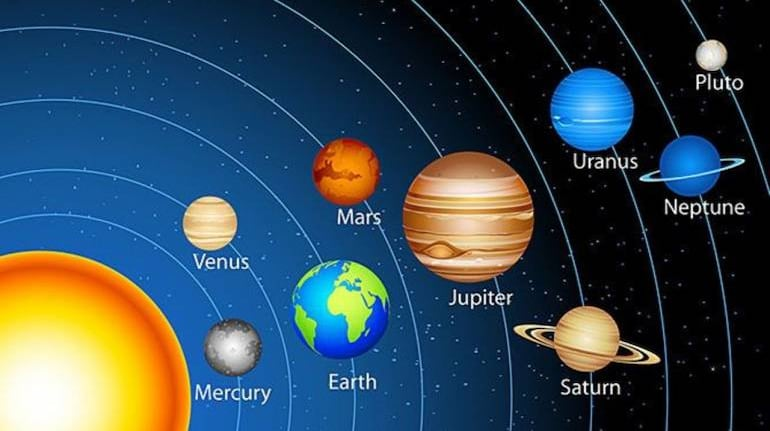
- Pluto was embraced as the solar system’s ninth planet upon discovery by Clyde Tombaugh in 1930.
- The crucial part of the definition of planet adopted by the International Astronomical Union (IAU) in 2006 is that a planet should have “cleared the neighbourhood of its own orbit”.
- Pluto clearly does not comply with this definition – it has rivals of comparable mass in addition to being overshadowed by the vastly more massive Neptune.
- These objects, along with Pluto, are much smaller than the "other" planets.
- Pluto – which is smaller than Earth’s Moon – has a heart-shaped glacier that’s the size of Texas and Oklahoma. It has blue skies, spinning moons, mountains as high as the Rockies, and it snows – but the snow is red.
- Pluto is about 1,400 miles wide. That's about half the width of the United States, or 2/3 the width of Earth's moon.
- Pluto orbits the Sun about 3.6 billion miles away on average, about 40 times as far as Earth, in a region called the Kuiper Belt.
- A year on Pluto is 248 Earth years. A day on Pluto lasts 153 hours, or about 6 Earth days.
- Pluto has a thin atmosphere of nitrogen, methane and carbon monoxide. The atmosphere has a blue tint and distinct layers of haze.
- Pluto has 5 moons. The largest, Charon, is so big that Pluto and Charon orbit each other like a double planet.
- Pluto’s surface is far too cold, -228 to -2380C, to sustain life as we know it.
UPSC Civil Services Examination, Previous Year Questions (PYQs)
Q. Which one of the following planets has largest number of natural satellites or moons? (2009)
(a) Jupiter
(b) Mars
(c) Saturn
(d) Venus
Ans: (a)
Exp:
- Jupiter has 79 moons which include Ganymede, the biggest moon in our solar system.
- Mars has two moons – Phobos and Deimos.
- Saturn has 82 moons, which makes it the planet with the largest number of moons.
- Note: However, when the question was asked Jupiter had the largest number of moons.
Q. Which one of the following is a spacecraft? (2008)
(a) Apophis
(b) Cassini
(c) Spitzer
(d) TechSar
Ans: (b)
Exp:
- The Cassini-Huygens space research mission commonly called Cassini, involved a collaboration among NASA, the European Space Agency (ESA), and the Italian Space Agency (ASI) to send a probe to study the planet Saturn and its system, including its rings and natural satellites.
Governance
Pradhan Mantri Awas Yojna Gramin
For Prelims: Pradhan Mantri Awas Yojna Gramin, Pradhan Mantri Awas Yojana – Urban.
For Mains: Welfare Schemes, Government Policies & Interventions, Issues Relating to Development, Significance of Pradhan Mantri Awas Yojana Gramin.
Why in News?
Recently, the Prime Minister inaugurated 5.21 lakh houses of beneficiaries of Pradhan Mantri Awas Yojna (PMAY)-Gramin in Madhya Pradesh.
What is Pradhan Mantri Awas Yojna Gramin?
- Launch:
- It was launched by the Ministry of Rural development to achieve the objective of “Housing for All” by 2022, the erstwhile rural housing scheme Indira Awaas Yojana (IAY) was restructured to PMAY-G w.e.f 1st April, 2016.
- Objectives:
- To provide a pucca house with basic amenities to all rural families, who are homeless or living in kutcha or dilapidated houses by the end of March 2022.
- To help rural people Below the Poverty Line (BPL) in construction of dwelling units and upgradation of existing unserviceable kutcha houses by providing assistance in the form of a full grant.
- Beneficiaries:
- People belonging to SCs/STs (Scheduled Castes/Scheduled Tribes), freed bonded labourers and non-SC/ST categories, widows or next-of-kin of defence personnel killed in action, ex servicemen and retired members of the paramilitary forces, disabled persons and minorities.
- Selection of Beneficiaries:
- Through a three stage validation - Socio Economic Caste Census 2011, Gram Sabha, and geo-tagging.
- Cost Sharing:
- The cost of unit assistance is shared between Central and State Governments in the ratio 60:40 in plain areas and 90:10 for North Eastern and hilly states.
- Features:
- The minimum size of the house has been increased to 25 sq.mt (from 20sq.mt) with a hygienic cooking space.
- The unit assistance has been increased from Rs. 70,000 to Rs. 1.20 lakh in plain and from Rs. 75,000 to Rs. 1.30 lakh in hilly states.
- The assistance for construction of toilets shall be leveraged through convergence with Swachh Bharat Mission-Gramin (SBM-G), MGNREGS or any other dedicated source of funding.
- Convergence for piped drinking water, electricity connection, LPG gas connection etc. different Government programmers are also to be attempted.
What is Pradhan Mantri Awas Yojana – Urban?
- Launch:
- Launched by the Ministry of Housing and Urban Affairs on 25th June 2015, intends to provide housing for all in urban areas by year 2022.
- Features:
- Addresses Urban housing shortage among the Urban Poor including the Slum Dwellers by ensuring a pucca house to eligible urban poor.
- The Mission covers the entire urban area consisting of Statutory Towns, Notified Planning Areas, Development Authorities, Special Area Development Authorities, Industrial Development Authorities or any such authority under State legislation which is entrusted with the functions of urban planning & regulations.
- All houses under PMAY(U) have basic amenities like toilets, water supply, electricity and kitchen.
- The Mission promotes women empowerment by providing the ownership of houses in the name of female members or in joint name.
- Preference is also given to differently abled persons, senior citizens, SCs, STs, OBCs (Other Backward Classes), Minority, single women, transgender and other weaker & vulnerable sections of the society.
- Divided into Four Verticals:
- In-situ Rehabilitation of existing slum dwellers using land as a resource through private participation.
- Credit Linked Subsidy.
- Affordable Housing in Partnership.
- Beneficiary-led individual house construction/enhancement.
Important Facts For Prelims
Access to MATLAB Software allowed for Academic Users
Why in News?
For the first time in the country, academic users in India will be able to access the MATLAB software suite at no cost through the Indian Science Technology and Engineering facilities Map (I-STEM) portal.
What is MATLAB?
- MATLAB is a proprietary multi-paradigm programming language and numeric computing environment developed by MathWorks.
- MATLAB, used by more than 4 million users globally, allows matrix manipulations, plotting of functions and data, implementation of algorithms, creation of user interfaces, and interfacing with programs written in other languages.
How is this Step Significant?
- The software suite is hosted on the cloud server of I-STEM to provide user friendly access from anywhere in India.
- It is expected to assist many students and researchers in the country, especially those in the more remote and less-endowed institutions, thereby enhancing learning outcomes and promoting Research & Development efforts across India.
What is an I-STEM Portal?
- About:
- I-STEM is a National Web portal for sharing R&D (Research and Development) facilities.
- The portal facilitates researchers to access slots for the use of equipment, as well as to share the details of the outcomes, such as, patents, publications and technologies.
- In July, 2021, I-STEM project was accorded an extension for five years, until 2026 and entered its second phase with added features.
- Launch:
- Launched in January 2020, it is an initiative of Office of the Principal Scientific Adviser to the Government of India under the aegis of Prime Minister Science, Technology and Innovation Advisory Council (PM-STIAC) mission.
- PM-STIAC: It is an overarching Council that facilitates the Principal Scientific Adviser’s Office to assess the status in specific science and technology domains, comprehend challenges in hand, formulate specific interventions, develop a futuristic roadmap and advise the Prime Minister accordingly.
- Launched in January 2020, it is an initiative of Office of the Principal Scientific Adviser to the Government of India under the aegis of Prime Minister Science, Technology and Innovation Advisory Council (PM-STIAC) mission.
- Goal:
- The goal of I-STEM is to strengthen the R&D ecosystem of the country by connecting researchers with resources.
- Promoting technologies and scientific equipment development indigenously, and providing necessary supplies and support to researchers by enabling them an access to existing publicly funded R&D facilities in the country through the I-STEM web portal.
- Phase-I:
- In the first phase, the portal was listed with more than 20,000 pieces of equipment from 1050 institutions across the country and has more than 20,000 Indian researchers.
- Objectives under Phase-II:
- The portal will host indigenous technology products listed through a digital catalogue. It will also host and provide access to selected R&D (Research and Development) software required to undertake research projects by students and scientists.
- The portal will also provide a platform for the various City Knowledge and Innovation Clusters to enhance effective use of R&D infrastructure through leveraging collaboration and partnership built on a shared STI (Science Technology and Innovation) ecosystem.
- New phase will be designed as a dynamic digital platform that will provide a boost to research and innovation especially for 2 tier and 3 tier cities and also for the emerging start-up ecosystem.
UPSC Civil Services Examination, Previous Year Questions (PYQs)
Q. ‘SWAYAM’ an initiative of the Government of India, aims at (2016)
(a) promoting the Self Help Groups in rural areas
(b) providing financial and technical assistance to young start-up entrepreneurs
(c) promoting the education and health of adolescent girls
(d) providing affordable and quality education to the citizens for free
Ans: (d)
Exp:
- Study Webs of Active-Learning for Young Aspiring Minds (SWAYAM) is a web portal where Massive Open On-line Courses are made available on all kinds of subjects.
- It is an Indian electronic e-educational platform which proposes to offer courses from the high school stage to postgraduate stage in an interactive electronic platform.
Important Facts For Prelims
IONS Maritime Exercise 2022
Why in News?
The maiden edition of Indian Ocean Naval Symposium (IONS) Maritime Exercise 2022 (IMEX-22) was conducted at Goa and in the Arabian Sea.
What is IMEX-22?
- The exercise witnessed participation of 15 out of the 25 member nations of IONS.
- The aim of the exercise was to enhance interoperability in Humanitarian Assistance and Disaster Relief (HADR) operations among member navies.
- The exercise is seen as a significant stepping stone for regional navies to collaborate and respond collectively to natural disasters in the region and paves way for further strengthening regional cooperation.
What is the Indian Ocean Naval Symposium?
- IONS is a premier forum for cooperation and collaboration among navies of littoral states of the Indian Ocean Region.
- The inaugural IONS Seminar was held in New Delhi in February, 2008.
- It is a voluntary initiative that seeks to increase maritime cooperation among navies of the littoral states of the Indian Ocean Region by providing an open and inclusive forum for discussion of regionally relevant maritime issues.
- There are 36 littoral states in the Indian Ocean which have been geographically grouped into the following four sub-regions.
- South Asian Littorals - Bangladesh, India, Maldives, Pakistan, Seychelles and Sri Lanka
- West Asian Littorals - Bahrain, Iran, Iraq, Kuwait, Oman, Qatar, Saudi Arabia, UAE and Yemen
- East African Littorals - Comoros, Djibouti, Egypt, Eriteria, France, Kenya, Madagascar, Mauritius, Mozambique, Somalia, South Africa, Sudan and Tanzania
- South East Asian and Australian Littorals - Australia, Indonesia, Malaysia, Myanmar, Singapore, Thailand and Timor Leste.
- The forum has enabled discussions on regional maritime issues, promoted friendly relationships, and significantly improved maritime security cooperation in the Indian Ocean Region.
- It endeavours to generate a flow of information between naval professionals that would lead to common understanding and possibly cooperative solutions on the way ahead.
What are the Other Important Groupings/Initiatives Associated with IOR?
- Colombo Security Conclave: The CSC, which was formed in 2011 as a trilateral maritime security grouping of India, Sri Lanka and the Maldives, is expanding. It recently welcomed Mauritius as a fourth member.
- Indian Ocean Rim Association: It was established in 1997. It is aimed at strengthening regional cooperation and sustainable development within the Indian Ocean region.
- Indian Ocean Commission: Recently, India has been approved as an observer of the Indian Ocean Commission, the inter-governmental organization that coordinates maritime governance in the south-western Indian Ocean.
- Security and Growth for All in the Region (SAGAR): It was launched in 2015. Through SAGAR, India seeks to deepen economic and security cooperation with its maritime neighbours and assist in building their maritime security capabilities.
- Asia Africa Growth Corridor: The idea of Asia Africa Growth Corridor (AAGC) emerged in the joint declaration issued by India and Japan in 2016.
- The AAGC is raised on four pillars of Development and Cooperation Projects, Quality Infrastructure and Institutional Connectivity, Enhancing Capacities and Skills and People-to-People partnership.
UPSC Civil Services Examination, Previous Year Questions (PYQs)
Q. Consider the following in respect of Indian Ocean Naval Symposium (IONS): (2017)
- Inaugural IONS was held in India in 2015 under the chairmanship of the Indian Navy.
- IONS is a voluntary initiative that seeks to increase maritime co-operation among navies of the littoral states of the Indian Ocean Region.
Which of the above statements is/are correct?
(a) 1 only
(b) 2 only
(c) Both 1 and 2
(d) Neither 1 nor 2
Ans: (b)
Important Facts For Prelims
Sariska Tiger Reserve
Why in News?
- Recently, a massive fire broke out inside the Sariska Tiger Reserve (Rajasthan). The fire spread and destroyed around 10 sq km of forests despite timely satellite warnings and the availability of a real-time mobile application-based fire response system.
- The United Nations Environment Programme (UNEP) warned in its annual Frontiers report released in February 2022 that wildfires — a natural phenomenon — have become more dangerous and now affect larger areas.
- A total of 381 forest fires have been reported in India by 30th March, 2022, according to the Forest Survey of India. Madhya Pradesh has recorded the highest number of fires at 133.
- The fire began because of dry grass, leaves and plants because of reasons unknown to the park authorities.
What are the Key Features of Sariska Tiger Reserve?
- About:
- Sariska Tiger Reserve is located in Aravali hills and forms a part of the Alwar District of Rajasthan.
- Sariska was declared a wildlife sanctuary in 1955 and was declared the tiger reserve later in 1978, making it a part of India's Project Tiger.
- The Reserve houses ruined temples, forts, pavilions and a palace.
- Kankarwadi fort is located in the centre of the Reserve and it is said that Mughal emperor Aurangzeb had imprisoned his brother Dara Shikoh at this fort in struggle for succession to the throne.
- The Reserve also houses a famous temple of lord Hanuman at Pandupole related to Pandavas.
- Flora and Fauna:
- The Reserve is immensely rich in flora and fauna, and is famous for Royal Bengal Tiger.
- The park has populations of leopards, Nilgai, Sambar, chital etc.
What are the other Protected Areas of Rajasthan?
- Desert National Park, Jaisalmer
- Keoladeo National Park, Bharatpur
- Ranthambore National Park
- Sajjangarh wildlife sanctuary, Udaipur
- National Chambal Sanctuary (on tri-junction of Rajasthan, Madhya Pradesh and Uttar Pradesh).
- Recently, the Ramgarh Vishdhari wildlife sanctuary received a nod from the National Tiger Conservation Authority’s (NTCA) technical committee to become the 4th Tiger reserve of Rajasthan.
UPSC Civil Services Examination, Previous Year Questions (PYQs)
Q. Consider the following pairs: (2014)
- Dampa Tiger Reserve : Mizoram
- Gumti Wildlife Sanctuary : Sikkim
- Saramati Peak : Nagaland
Which of the above pairs is/are correctly matched?
(a) 1 only
(b) 2 and 3 only
(c) 1 and 3 only
(d) 1, 2 and 3
Ans: (c)
EXP:
- Dampa Tiger Reserve cum Wildlife Sanctuary is situated in Western Mizoram. Hence, pair 1 is correctly matched.
- Gumti Wildlife Sanctuary is situated in the southeast corner of Tripura. Hence, pair 2 is not correctly matched.
- Having an altitude of 3841 m, Saramati is the highest peak in the State of Nagaland. The peak is located on the Nagaland-Myanmar border. Hence, pair 3 is correctly matched.
- Therefore, option (c) is the correct answer.
Q. In which one of the following States is Pakhui Wildlife Sanctuary located? (2018)
(a) Arunachal Pradesh
(b) Manipur
(c) Meghalaya
(d) Nagaland
Ans: (a)
Exp:
- Pakhui Wildlife Sanctuary lies in the foothills of the Eastern Himalaya in the East Kameng District of Arunachal Pradesh.

